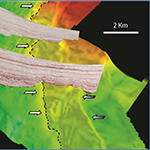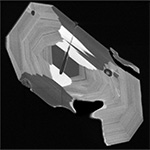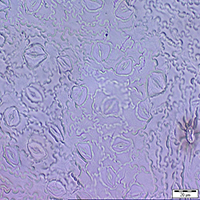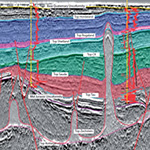
Structural Geology this group conducts ground-breaking research on deformation of rocks in the upper crust. This involves investigation of the changes in the lithostratigraphy, geometry and properties of rocks during both brittle and ductile deformations at different scales from basin to microscopic scale. The interdisciplinary research topics of the current and future projects insure the relevance of the group’s research to the societal problems and sustainable energy solutions.

Geochronology is used to determine the age of a rock. Isotopic abundances of U and Pb in minerals are measured and their ages can be constrained. Dating volcanic layers in a given stratigraphy can aid in correlation of units and establish an absolute chronostratigraphy. Furthermore, age signatures of sedimentary grains can be matched with source terranes to track the origin of sedimentary units.

Paleoclimate - The sedimentary records hold a unique archive of Earth’s climate history. Palaeoclimatology is a multidisciplinary research field which deals with the reconstruction of the climate history by studying the sedimentary successions and their physical, geochemical and palaeontological characteristics to unravel the climate conditions under which they were formed.

Sedimentological studies are basic to an understanding of the processes of sediment erosion, transport and deposition. Field studies, well-analysis, seismic analysis (e.g. seismic strati-graphy, sequence stratigraphy), and other methods are employed. As a basin fills, mechanical and chemical changes (diagenesis) begin, producing compaction of the sediments, while fluids flow through the sediment pores.

Geophysical Methods are used to image, map, and analyse structures from the crust to the shallow subsurface, and to study the physical, chemical, electrical, acoustic, and hydraulic properties of rocks and their contained fluids. Seismic and elastic properties of rocks can, through thorough physical characterization, reveal reservoir, seal and source rock properties.